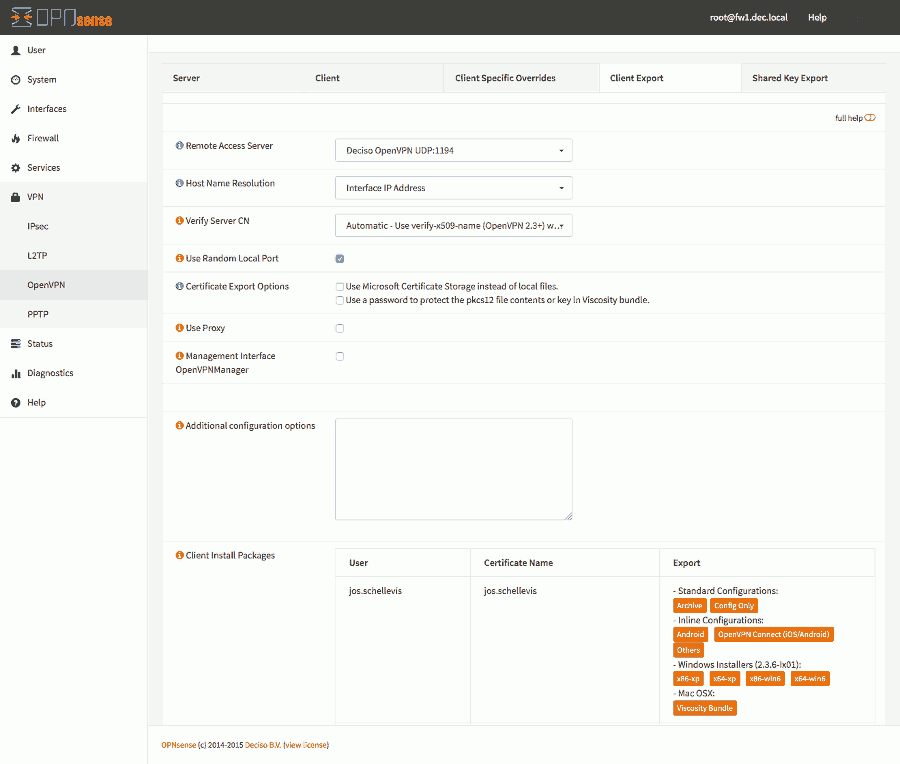
Instead, use something that has a lower probability of being used in a WiFi cafe, airport, or hotel where you might expect to connect from remotely. The best solution is to avoid using 10.0.0.0/24 or 192.168.0.0/24 as private LAN network addresses.
REDDIT VISCOSITY VPN HOW TO
This won't work without adding a complexifying layer of NAT translation, because the VPN won't know how to route packets between multiple sites if those sites don't use a subnet which uniquely identifies them. You will have a routing conflict because your machine won't know if 192.168.0.1 refers to the local WiFi gateway or to the same address on the VPN.Īs another example, suppose you want to link together multiple sites by VPN, but each site is using 192.168.0.0/24 as its LAN subnet. Now you are trying to connect to the VPN from an internet cafe which is using the same subnet for its WiFi LAN. Remote access connections from sites which are using private subnets which conflict with your VPN subnets.įor example, suppose you use the popular 192.168.0.0/24 subnet as your private LAN subnet. The types of conflicts that need to be avoided are:Ĭonflicts from different sites on the VPN using the same LAN subnet numbering, or While addresses from these netblocks should normally be used in VPN configurations, it's important to select addresses that minimize the probability of IP address or subnet conflicts. Setting up a VPN often entails linking together private subnets from different locations. Hopefully these are pretty basic questions. In the Viscosity OpenVPN client, I have the option "Send all traffic through VPN connection" enabled.

Neither of the above two issues are present. I tried using the "OpenVPN for Android" app on my Nexus 6P and imported my config. I'm thinking these two issues are client based. It shows this by showing my friends ISPs DNS servers instead of my ISP I use at home. So far, so good.ġ) If I'm connecting from a friends wifi and his router has the same gateway (192.168.1.1) and I try to access my home routers gateway, it goes to his router instead.Ģ) When I check, it is saying my DNS requests are leaking. If I go to a site like and check my IP address, I get the IP of my home router. OSX laptop with Viscocity or Tunnelblick clients Now I want to switch to OpenVPN but I can't quite get it to work the same.Īsus N66U with Shibby Tomato firmware with OpenVPN support

I know it's not secure but it's the easiest to use. I've been using a fairly basic PPTP setup on my home router.


 0 kommentar(er)
0 kommentar(er)
